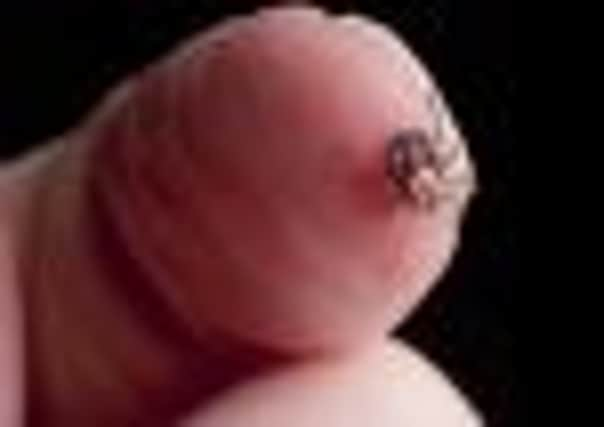Don’t be ticked off by pest with appetite for summer


Economic malaise and the ongoing uncertainty in the eurozone have left many of us contemplating the impending holiday season with a sense of unease.
As a result, thousands are expected to forgo their usual foreign fortnight and opt instead for a “staycation” in the UK.
Advertisement
Hide AdAdvertisement
Hide AdAnd why not, you may ask, for the UK is a reassuringly green and pleasant land, boasting an extraordinary range of landscapes to suit even the pickiest of holidaymaker.
But, before you reach for the camping stove, it may be worth considering that out in the bushes lurks the wildlife equivalent of a video nasty and this tiny ball of trouble is on the increase.
In a land relatively free of A-list animal assassins, the tick, despite its diminutive size, is becoming increasingly notorious.
Not only does this mini-beast boast the deeply unattractive habit of burying its head deep into flesh and gorging on blood, but a small proportion of ticks also carry the potentially harmful Lyme disease. The disease, named after the town of Old Lyme in Connecticut, US, is a bacterial infection that can cause a wide range of symptoms from chronic fatigue to arthritis.
Advertisement
Hide AdAdvertisement
Hide AdThe presence of ticks in the great outdoors was not traditionally a huge cause for concern as they were generally restricted to the further flung echelons of the UK and were only at large for limited parts of the year.
But not any more. The tick is on the march.
A range of factors has led to an increase in our exposure to ticks and in turn – exposure to Lyme disease. In 2001 there were around 250 cases, but last year the Health Protection Agency (HPA) reported around 1,000 incidences of the disease.
And the HPA estimates that between 1,000 and 2,000 additional cases occur each year in England and Wales.
The tick shares our penchant for popular tourist destinations. The North York Moors, the Lake District, New Forest, Exmoor, the Lake District, the Scottish Highlands and the South Downs all harbour significant tick populations.
Advertisement
Hide AdAdvertisement
Hide AdDespite being vaguely aware of their existence and that they are very small, many of us would be a stretched if asked to shed light on what makes a tick, well, tick.
The UK has more than 20 species of this relative of the spider, but it is the sheep tick that poses the biggest risk to humans. And we are not the only ones troubled by the tick.
Different species feast on different prey – sheep, deer, tortoises, birds and even water vole are all fair game.
The pinhead-sized nymph does the majority of the damage. Tick saliva contains painkillers, anticoagulants and immune suppressants, so you really have no idea when they are chomping their tiny jaws through your flesh.
Advertisement
Hide AdAdvertisement
Hide AdThey are determined too. If unnoticed, ticks can stay attached to their host feeding for several days before dropping off – swollen and bloated with blood.
But the potential danger needs to be put in perspective. Buglife’s Matt Shardlow explains: “Lyme disease is only carried by a very small percentage of ticks.” And we can greatly reduce our chances of being bitten by covering up in infested areas, using insect repellent and regularly checking for ticks.
Dr Hilary Kirkbride, head of zoonotic infections at the HPA, says: “If you find a tick, it should be removed promptly, as infected ticks are unlikely to transmit infection if they are removed in the early stages of attachment.”
Dealing with the threat of ticks
The increase in Lyme disease is down to a wide range of factors, according to Dr James Logan, a lecturer in medical entomology at the London School of Hygiene and Tropical Medicine.
Advertisement
Hide AdAdvertisement
Hide AdThese include a spate of warm winters and moist summers that have enabled more ticks to survive and complete their lifecycle.
Another reason is an increase in the numbers of deer and other animals that ticks favour as hosts.
The reduction in sheep dipping and decline of bracken and heather control could also be helping ticks.